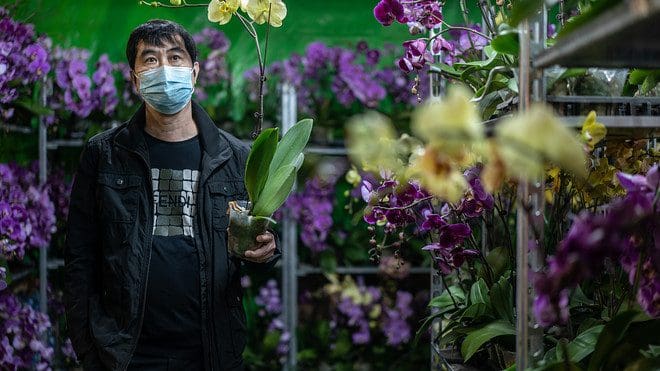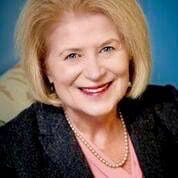Search Posts
Recent Posts
- Vinny Paz to be inducted TODAY into the International Boxing Hall of Fame – CES Boxing June 7, 2025
- In the News… quick recap of the week’s news (6.7.25) June 7, 2025
- Burn with Kearns: Strong without the spend: How scraps became strength tools – Kevin Kearns June 7, 2025
- Rhode Island Weather for June 7, 2025 – Jack Donnelly June 7, 2025
- How to advocate for threatened properties: The Heritage Alliance of Pawtucket June 7, 2025
Categories
Subscribe!
Thanks for subscribing! Please check your email for further instructions.

April is the Cruelest Month
By Mary T. O’Sulivan, MSOL
“The first of April is the day we remember what we are the other 364 days of the year.” – Mark Twain
When Geoffrey Chaucer, in The Canterbury Tales, described the month of April with its “shoures soote/Of which vertú engendred is the flour; (sweet showers/By which power/the flower is created;), Chaucer hadn’t been quarantined inside his house for two whole months. In times past, I’ve often felt like T.S. Elliot, when he intoned “April is the cruelest month/breeding/Lilacs out of the dead land, mixing/Memory and desire, stirring/Dull roots with spring rain.” I know how he felt with April’s fickle days of warmth and beauty, but also eclipsed by its gloom of frigid days of cold winds and snow. But now, looking from the inside out, April seems bloomy, even on the coldest days, with all its brilliant, colorful splendor. The cool April rains now signal hope. The doom of isolation melts “like April snow”( Jerry Livingston / Paul Webster, The Twelfth of Never), at least from looking out the window.
In the last two months, we’ve learned that isolation can be tedious, stifling, and mind-numbing, regardless of the weather. As social beings, humans crave other humans for camaraderie, companionship, company, friendship, love. We desire that “human” touch, a warm hug, to sit with a friend face to face over lunch or a cup of tea, to share a meal with our closest family. And it’s been lonely without milling around in a crowd, rushing to the gym, attending a movie or live show in an actual theater, and cheering on our favorite teams in our most beloved stadiums. It’s the human experience, and community has always been the key to the survival of our species. Living in a vacuum has not been easy.
As much as human warmth and companionship are needed and desired for the well-being, overall happiness, and survival of our species, our impetus to preserve the continued line of homo sapiens is even stronger. Prehistory tells a story of old, weak or deformed humans being left behind to die or killed, as they slowed down the hunter-gathers traversing ancient grounds. These ancients could see with their eyes who needed to be “culled from the herd” for survival of the group.
But, an invisible danger, like the plague, HIV, the Spanish flu, and COVID-19 is hard to identify immediately, because we rely on our senses to demonstrate truth. Opinions, debates, and arguments over the reality of disease arise. Once large numbers of us experience the infection’s full impact, thinking and opining are not enough. Fortunately, in 2020, we can turn to science for solutions. Now we know, as in all other pandemics, some measure of social behavioral change can redeem us. Science is telling us, to stay safe, touching hands and face, being in crowds, large gatherings, even church services must be strictly controlled or banned. These warnings are no different than the ones issued during every other great pandemic in history. Yet, the “Doubting Thomas’s” of our era persist. People are crowding grocery stores, pharmacies, hardware stores, etc. Masks are not being worn; no gloves are in sight. State’s Governors have had to issue orders to prohibit crowds. Is this behavior due to spring fever?
The beauty of this season is tempting. It’s spring, Easter, Passover; where could this disease be? We resist embracing the words of science. We continue to opine, to predict, to forget. We’re not hearing the words of the frontline healthcare workers who look straight into the camera and command us point blank, “Stay home!” Yet, when, when, we ask, can we go “back to our normal lives?”
The virus isn’t on a schedule. A virus will stay around and infect and kill our species until there is a cure, treatment or a vaccine. Presently, there are none for COVID-19.
As Dr. Anthony Fauci, head of the National Institute of Allergy and Infectious Disease has said,” The virus decides when the country will open back up.” So, that leaves us to curb our disappointment; to get back to our laptops, our Zoom connections, working from home, distance learning, and online ordering. Spring has sprung. And we can still take rides along the ocean, go out for fresh air in our back yards, watch the daffodils and crocus pop up in the garden from our windows.
“When the West Wind also with its sweet breath/In every wood and field has breathed life into/The tender new leaves, and the young sun/Has run half its course in Aries/And small fowls make melody,/Those that sleep all the night with open eyes/(So Nature incites them in their hearts)/Then folk long to go on pilgrimages…”
As Chaucer says, when the warm winds blow, leaves grow, sun rises in Aries and birds sing, “Then folk long to go on pilgrimages…” to the grocery store, pharmacy, movies, gatherings, dinners, and church.
But not until the virus decides for us. Until then, stay home!

Connect with Mary:
mary@encoreexecutivecoaching.com
www.encoreexecutivecoaching.com
401-742-1965
Mary T. O’Sullivan, MSOL
Mary O’Sullivan has over 30 years of experience in the aerospace and defense industry. In each of her roles she acted as a change agent, moving teams and individuals from status quo to higher levels of performance, through offering solutions focused on changing behaviors and fostering growth.
Mary has a Master of Science in Organizational Leadership from Quinnipiac University. In addition, she is also an International Coaching Federation Professional Certified Coach, a Society of Human Resource Management Senior Certified Professional and has a Graduate Certificate in Executive and Professional Coaching, from the University of Texas at Dallas.
In her leadership and executive coaching, she focuses on improving the executive behaviors that slow down performance and lead to growth, such as soft skills, communication, micro-bias awareness, etc. She has successfully helped other professionals, such as attorneys, surgeons, pharmacists, and university professors, make career decisions to lead to success in their chosen careers. In addition, small business owners have sought Mary’s services to bring their companies into greater alignment, working on their culture, vision, mission, values and goals as well as organizational structure. Mary’s executive coaching has been mainly with large organizations among them: Toray Plastics America, Hasbro, Raytheon Company, Lockheed Martin, CVS Healthcare, Sensata Technologies, Citizen’s Bank, Ameriprise, BD Medical Devices, Naval Undersea Warfare Center, (Newport, R.I.), General Dynamics, University of Rhode Island, Community College of Rhode Island, etc.
Mary has facilitated numerous workshops on various topics in leadership such as, emotional intelligence, appreciative inquiry, effective communication, leading in adversity, etc. She has also written extensively on similar topics.
Mary is also a certified Six Sigma Specialist, Contract Specialist, IPT Leader and holds a Certificate in Essentials of Human Resource Management from the Society of Human Resources Development. Mary is also an ICF certified Appreciative Inquiry Practitioner, and a Certified Emotional Intelligence assessor and practitioner.
In addition, Mary holds a permanent teaching certificate in the State of New York for secondary education with Advanced Studies in Education from Montclair University, State University of New York at Oswego and Syracuse University. She is also a member Beta Gamma Sigma and the International Honor Society.
Mary dedicates herself to coaching good leaders to get even better through positive approaches to behavior change for performance improvement.
